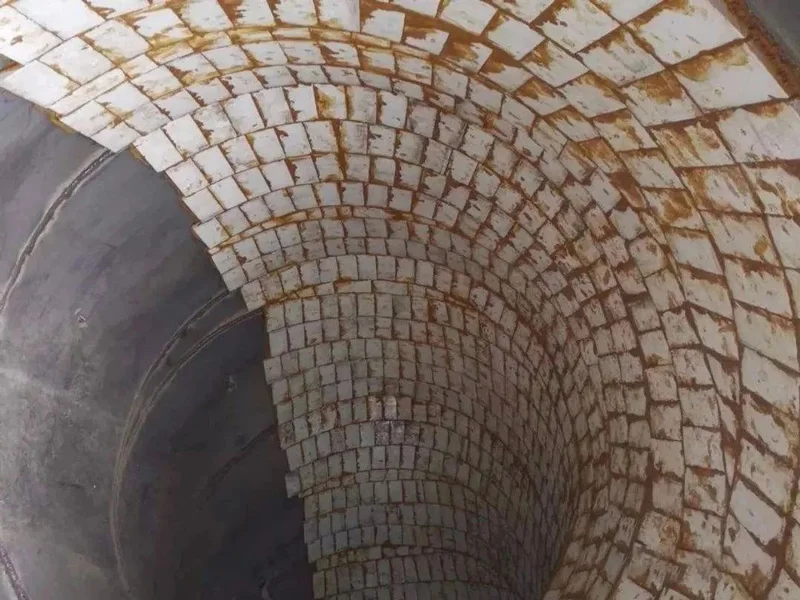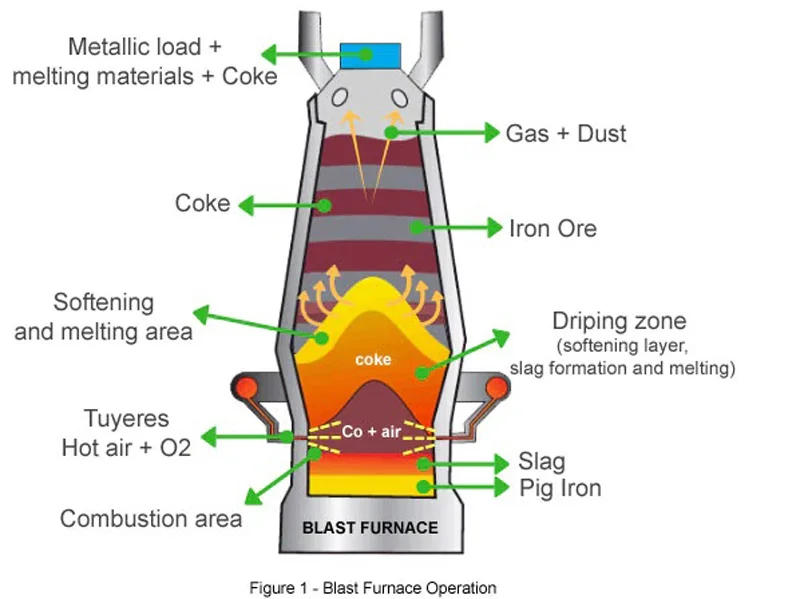During the production process, the refractory bricks of the furnace wall are gradually eroded by various effects. We should follow two major principles when selecting refractory bricks for each part. First, the refractory bricks should correspond to the heat flux intensity of the part. Second, the refractory bricks should correspond to the erosion mechanism of the part.

Selection Method of Refractory Bricks in Various Parts
Furnace throat: mainly bears the impact and wear of the incoming charge. Generally, we use steel bricks or water-cooled steel bricks.
Upper part of the furnace: the erosion of alkali metals and zinc vapor occurs in this area. In addition, this part will also be eroded and worn by the upper and lower furnace charges and the rising gas flow. Therefore, we should choose refractoriness of materials with good chemical corrosion resistance and wear resistance. The most suitable ones are high-density fire clay bricks, three-grade high alumina bricks or phosphorus-impregnated fire clay bricks.
Lower part of furnace body and furnace waist: for the brick lining of this part, we should choose refractory materials that are resistant to thermal shock, resistant to initial slag erosion and erosion. For example, silicon carbide bricks and alumina carbon bricks. However, the price of silicon carbide bricks is relatively expensive.
Furnace belly: the heat flux intensity in this area is very high. Generally, we choose refractory materials with high refractoriness, high refractoriness under load and high bulk density. For example, high alumina bricks and alumina-carbon bricks.
Hearth tuyere area: this is the only area in the blast furnace where oxidation reaction takes place. The high temperature it generates can reach 1900℃ – 2400℃. Therefore, modern blast furnaces all use combined bricks to build the hearth tuyere area. They are high alumina brick, corundum mullite brick, brown corundum brick and silicon nitride bonded silicon carbide brick.
Lower part of the furnace and furnace bottom: the use of corundum bricks and hot-pressed bricks in this area can greatly extend the service life of the blast furnace bottom.



Conclusion
Blast furnace operation is a complete system engineering. The refractory bricks of the blast furnace body play an important role in it. Therefore, the lining of the blast furnace must select appropriate refractory materials according to the location. Contact Kerui to get free engineering drawing design.